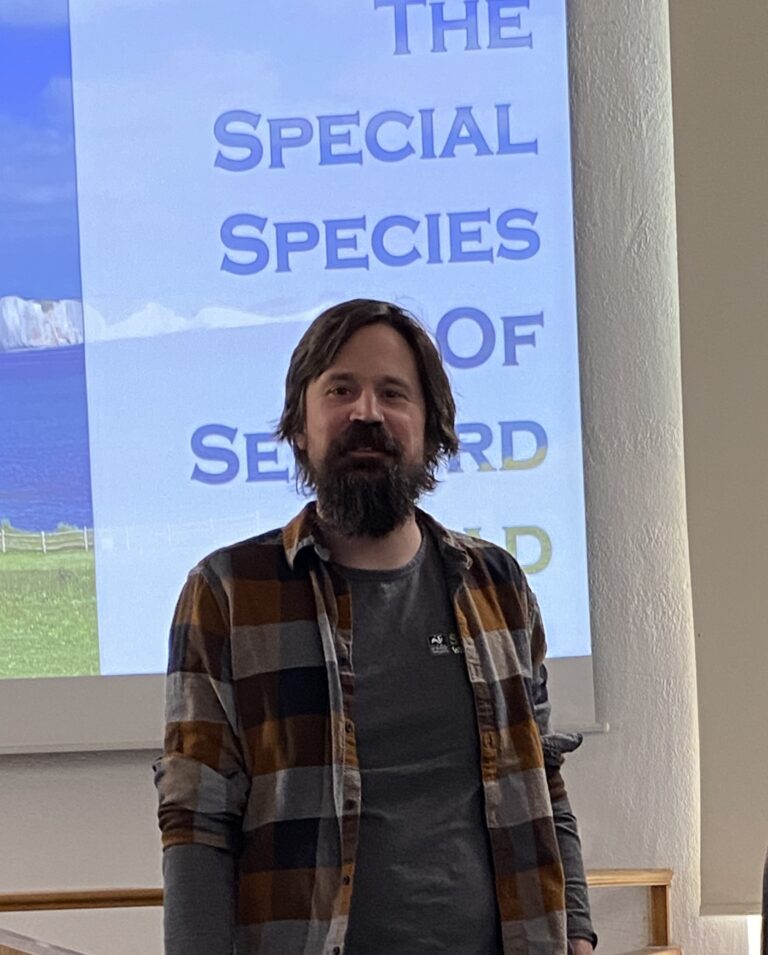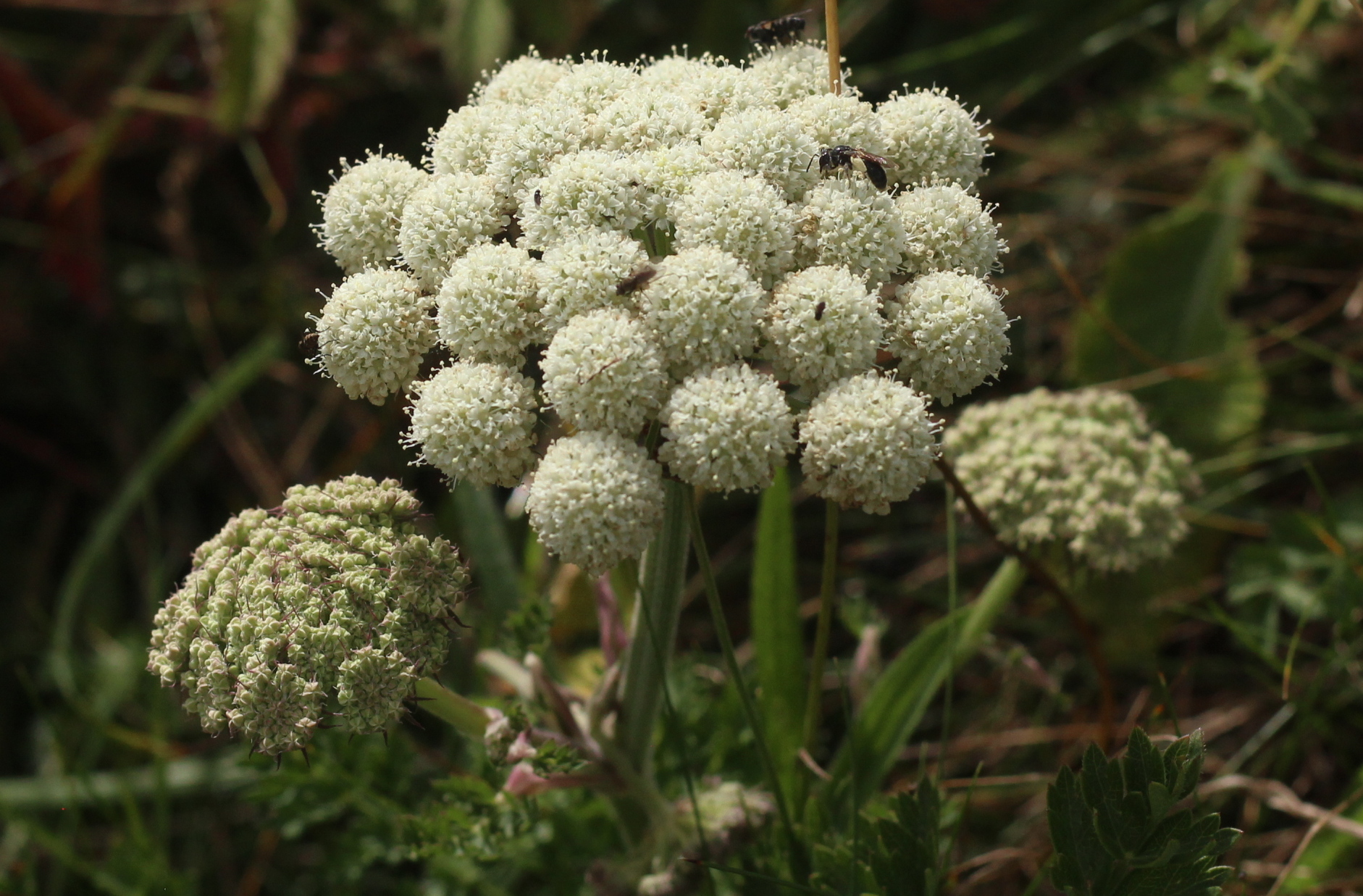What a brilliant talk by Alex Worsley about the special species of Seaford Head!
Although Alex is quite new to this area, he clearly has a passion for the wildlife that lives here and we learnt about some interesting species! Like Michael Blencoe last month Alex emphasised the huge importance of recording rare (and common) species that we find. The ongoing identification and recording work of Seaford Natural History Society and other groups and individuals is crucial to ensure that habitats can be managed and rare species protected. Do get involved if you can.
Interesting early records of species now extinct include the Little bustard in 1846 and Callum’s bumble bee in 1923. The cirl bunting was once a common bird but was last recorded here in 1978.
Overall Alex told us there are 180 national priority or protected status species on the reserve.
Rare plants he mentioned include Green winged orchid and Autumn ladies tresses. The small hare’s ear is found not far away at the very edge of the cliff at Beachy head (and Torbay in Devon). Chalk eyebright is another rare plant – though eyebrights are notoriously difficult to differentiate from each other.
SNHS members will be aware of one of our “famous” species the Moon carrot (pictured above) for which a survey is carried out each year near Hope gap. People might be less aware of Moon carrot rust – a fungi specific to the moon carrot, surely worth keeping an eye out for!
The Potter flower bee is one of the special bees on the reserves, though tricky to differentiate from the very similar hairy footed flower bee. Another fascinating bee is the gold fringed mason bee, which is one of the species that lays its eggs in empty snail shells.
The reserve has perfect habitats of loose earth used by mining bees including the Bryony Mining bee, Black mining bee and Black headed mining bee. Other rare insect species include the dotted bee fly, saltmarsh horsefly and Forester moth.
Alex also mentioned the Lessor Emperor dragonfly found recently in the recently restored dew pond by South barn and a rare millipede that thrives in the shingle strandline. Saltmarsh river and shingle pollution is a problem that needs to be addressed.
After the talk, there was time for a varied selection of enthusiastic questions from the audience! This included ones about habitat for adders, how footfall can be managed to protect species and how the erosion of the coast has affected kittiwakes. (SOS have recently issued a statement about this here). Also asked was the reason for rabbit decline, and how the lack of grazing impacts species that rely on short turf/chalk grassland. The management of ground ivy was also discussed, and there was a question about how to protect local land which is earmarked for development and adjacent to the reserve.
It was a fascinating talk, and so heartwarming to see so many people willing to brave the wind and rain to come and learn more about the wonderful wildlife of Seaford head nature reserve and how to protect it.
Great to meet volunteers from local groups too, including Trees for Seaford and Seaford Community garden.
Judy
We would love to hear your feedback from the talk. Do get in touch.
Click here to find out details of future walks and talks by SNHS and On the Verge, funded by the Ouse Valley Climate action fund.







